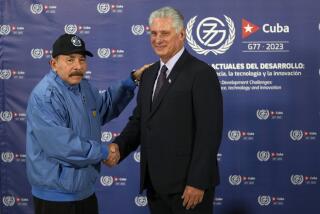DONA VIOLETA
- Share via
Throughout Boudreaux’s piece is the implication that the woes of Nicaragua’s economy can be laid at the feet of the Ortega brothers, the Sandinistas and, to a greater degree, socialism. Certainly, some validity lies in that conclusion.
Still, the author’s characterization that the “Sandinista decade of armed conflict and failed socialism set living standards back to the 1930s” is simply inaccurate.
First, it suggests that the armed conflict was initiated and sustained by the Sandinistas and ignores their periodic efforts to develop a peace settlement. Second, it completely dismisses the gains that have been made in education, health care and land reform. Third, it omits the role and effects of the Reagan Administration in blocking loans and other support programs from the World Bank, International Monetary Fund and European countries that would have assisted the flagging Nicaraguan economy.
Chamorro’s struggles to reconcile Nicaragua’s diverse political and economic interests and ideologies are real and extensive. However, her problems are not simply the Sandinista legacy, but also the outcome of a misguided U.S.-Central American foreign policy. To discount this point so explicitly contributes to our continued lack of understanding of the nature and extent of the problems Chamorro faces. And it implicitly contributes to the stream of red-baiting propaganda so often foisted on the American public during the last decade.
GERRY RIPOSA
ASSISTANT PROFESSOR, DEPARTMENT OF POLITICAL SCIENCE
CAL STATE LONG BEACH
More to Read
Sign up for Essential California
The most important California stories and recommendations in your inbox every morning.
You may occasionally receive promotional content from the Los Angeles Times.












